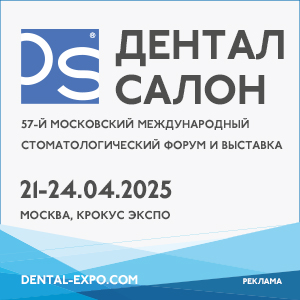DOI:
10.37988/1811-153X_2024_3_84Analysis of the stress-strain state in the restoration of a missing clinical crown
Downloads
Abstract
The destruction of the clinical crown of a tooth is a common issue that is often encountered during a dental appointment. In order to restore the missing part of the tooth, dentists typically use pin structures, such as stump pin tabs or pin teeth, which are covered with artificial crowns. Currently, doctors have the ability to compensate for lost tooth crowns using indirect inlays and overlays, utilizing the walls of the pulp chamber as a support. However, the success of orthopedic dental treatment depends not only on the strength of these structures. The way the chewing force is distributed, as well as the combined stresses and deformations that occur when this force acts on the repaired teeth, significantly impact the long-term outcomes of prosthetics. The purpose of this study is to examine the stress-strain situation when using different orthopedic structures for restoring a completely lost clinical tooth crown.Materials and methods.
The modeling of geometric models was performed using the Ansys SpaceClaim CAD software. Two variants of chewing force direction were simulated: vertical and at a 45° angle to the occlusal surface of the clinical crown. As a result of the calculations, a stress distribution pattern in the volumetric structure was obtained. Three orthopedic structures were selected for the study: 1) a cast stump post with a pin covered with an artificial zirconia crown (Group I); 2) an all-ceramic endocoronal restoration with a box-like cavity and a 10° inclination angle of the side walls (Group II); 3) — an inverted truncated cone-shaped all-ceramic restoration with converging lateral surfaces towards a smaller base at a 3° angle, with the perimeter of the small base being rounded (Group III).
Results.
The maximum stresses occurring in tooth tissues under vertical and oblique loads were highest in Group I and amounted to 9.46 and 14.58 MPa respectively. These values were 22 and 36% lower than in Group II, where maximum stresses under vertical and oblique loading were 7.42 and 9.28 MPa. In Group III, the lowest values of stress were observed under both vertical and oblique loads, at 4.46 and 5.21 MPa respectively. In addition, the use of all-ceramic endocorn implants resulted in a redistribution of forces and the elimination of concentrated stress zones at the implant-tooth interface, potentially reducing the risk of crack formation.
Conclusion.
The use of pinless endocorns, which are supported on the walls of the pulp chamber, allows for a significant redistribution of chewing forces and a reduction in the loads placed on the tooth stump, thus reducing the risk of fracture of the natural tooth tissues.
Key words:
dentistry, destruction of the clinical crown of the tooth, stress-strain state, pin structuresFor Citation
[1]
Trunin D.A., Nesterov A.M., Sadykov M.I., Sagirov M.R., Dmitriev D.I., Musaev N.S. Analysis of the stress-strain state in the restoration of a missing clinical crown. Clinical Dentistry (Russia). 2024; 27 (3): 84—89. DOI: 10.37988/1811-153X_2024_3_84
References
- Akhmetov S.E., Fedorov V.E., Akhmetov E.M., Semenyuk V.M. The prevalence of dental diseases in persons with type II diabetes mellitus requiring orthopedic treatment. The Dental Institute. 2021; 1 (90): 12—13 (In Russian). eLIBRARY ID: 45632810
- Liu B., Zhang M., Chen Y., Yao Y. Tooth wear in aging people: an investigation of the prevalence and the influential factors of incisal/occlusal tooth wear in northwest China. BMC Oral Health. 2014; 14: 65. PMID: 24902953
- Semenova M.V., Nagaeva M.O., Semenova A.I., Diev M.S., Dzheiranashvili I.H. Estimation of the complication rate and conformation for the case using orthopedic structures. Medical science and education of the Urals. 2021; 1 (105): 122—124 (In Russian). eLIBRARY ID: 45413078
- Nesterov A., Sadykov M., Sagirov M. Analysis of prosthetic treatment of patients with stump pinlays with artificial crowns according to archival materials of a large dental clinic. The Scientific Heritage. 2021; 76—1 (76): 17—20 (In Russian). eLIBRARY ID: 47096930
- Gazhva S.I., Teterin A.I., Prosvirkina J.S., Yanysheva K.A. Methods for orthopedic treatment of patients with declined clinical crowns of supporting teeth. Literature review. Medical and pharmaceutical journal Pulse. 2021; 10: 56—63 (In Russian). eLIBRARY ID: 47577775
- Novak N. Application of pins of various type at restoration of a crown of tooth. Stomatologičeskij žurnal. 2018; 4: 288—293 (In Russian). eLIBRARY ID: 38186185
- Kramer E.J., Meyer-Lueckel H., Wolf T.G., Schwendicke F., Naumann M., Wierichs R.J. Success and survival of post-restorations: six-year results of a prospective observational practice-based clinical study. Int Endod J. 2019; 52 (5): 569—578. PMID: 30417927
- Soshnikova K.A., Skachkova A.A., Polivanaya O.D., Polivanaya E.A. “Build-up against pinlay”: a comparison of designs. Bulletin of the Northern State Medical University. 2021; 1 (46): 28—30 (In Russian). eLIBRARY ID: 49325778
- Bustamante-Hernández N., Montiel-Company J.M., Bellot-Arcís C., Mañes-Ferrer J.F., Solá-Ruíz M.F., Agustín-Panadero R., Fernández-Estevan L. Clinical behavior of ceramic, hybrid and composite onlays. A systematic review and meta-analysis. Int J Environ Res Public Health. 2020; 17 (20): 7582. PMID: 33086485
- Manatina V. Clinical substantiation of indications for the use of endocrowns. Sovremennaya stomatologiya (Belarus). 2019; 2 (75): 69—74 (In Russian). eLIBRARY ID: 38532180
- Papalexopoulos D., Samartzi T.K., Sarafianou A. A thorough analysis of the endocrown restoration: A literature review. J Contemp Dent Pract. 2021; 22 (4): 422—426. PMID: 34267013
- Koshelev, Evstifeeva E., Belousov N., Filippchenkova S., Murashova L. Long-term results of dental orthopedic treatment in the aspect of quality of life change. Actual Problems in Dentistry. 2019; 3: 152—157 (In Russian). eLIBRARY ID: 41212359
- Komlev S.S., Bazhutova I.V., Pugachev S.A., Razumny V.A., Zakharova I.A. Analysis of the negative outcomes of the results of prosthetics with bridge-like orthopedic structures in the lateral sections of the dentition. Medical alphabet. 2022; 22: 38—40 (In Russian). eLIBRARY ID: 49926705
- Murakami N., Wakabayashi N. Finite element contact analysis as a critical technique in dental biomechanics: a review. J Prosthodont Res. 2014; 58 (2): 92—101. PMID: 24709475
Downloads
Received
February 2, 2024
Accepted
August 27, 2024
Published on
October 2, 2024











